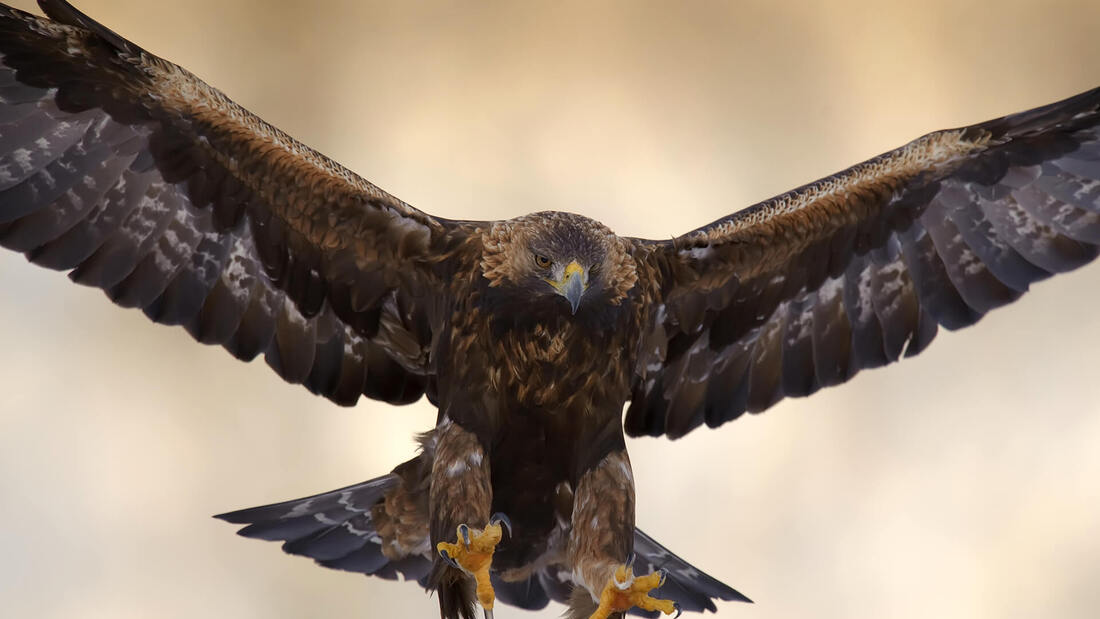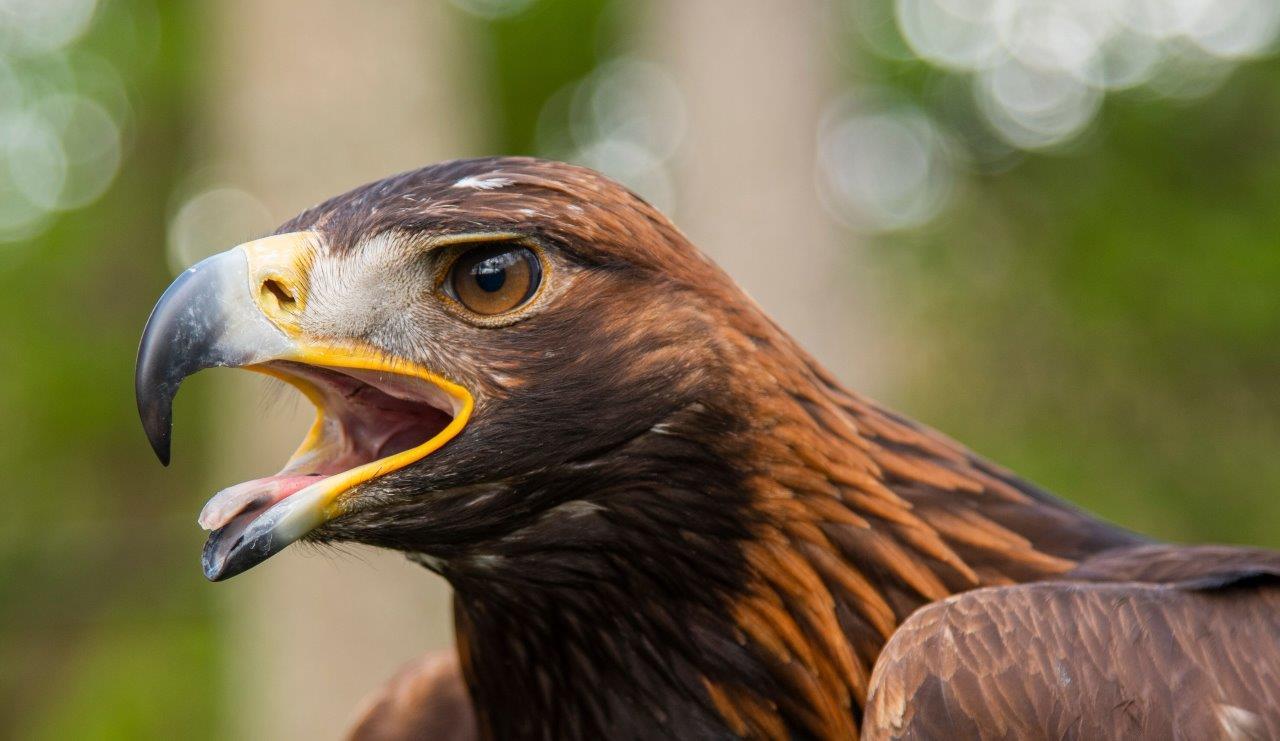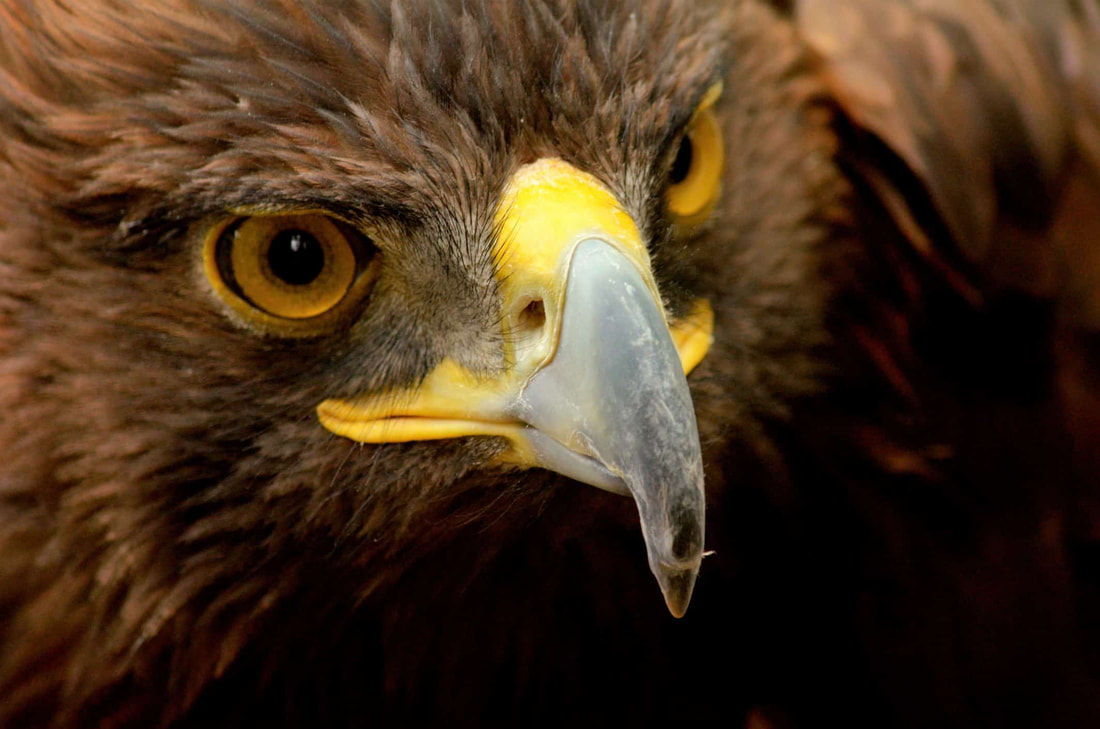|
Golden Eagles are one of the most majestic creatures on the planet. With their impressive wingspan, powerful talons, and keen eyesight, they are truly a wonder to behold. These magnificent birds of prey are found throughout the northern hemisphere, from Europe and Asia to North America. In this article, we will take a closer look at the fascinating world of Golden Eagles. Physical Characteristics
Golden Eagles are large birds of prey, with a wingspan that can reach up to 7 feet (2.1 meters) and a body length of around 3 feet (0.9 meters). They can weigh anywhere from 6 to 15 pounds (2.7 to 6.8 kilograms), with females being larger than males. One of the most striking features of the Golden Eagle is its golden-brown plumage, which covers most of its body. They have dark feathers on their head, neck, and wings, which create a distinctive contrast with their light-colored feathers. Their beaks and talons are sharp and powerful, enabling them to capture and kill prey with ease. Habitat and Range Golden Eagles can be found in a wide range of habitats, from mountainous regions to open plains and deserts. They are known to inhabit areas with rocky cliffs and open spaces, as well as forests and grasslands. They are found throughout the northern hemisphere, from Europe and Asia to North America, and can be found as far south as Mexico. Behavior and Diet Golden Eagles are apex predators, meaning they are at the top of the food chain in their ecosystems. They feed on a wide range of prey, including rabbits, hares, ground squirrels, and other small mammals. They also eat birds, reptiles, and fish, making them one of the most versatile predators in the animal kingdom. Golden Eagles are known for their hunting prowess, and they use their keen eyesight and powerful talons to capture their prey. They are also skilled fliers, able to soar high above their territories for hours at a time. They have been known to travel long distances in search of food, and they can cover up to 100 miles (160 kilometers) in a single day. Breeding and Reproduction Golden Eagles typically mate for life, and they form strong bonds with their partners. They build large nests, usually on rocky cliffs or in trees, which they use to raise their young. The female lays one to four eggs each year, and both parents take turns incubating the eggs and caring for the young. The chicks hatch after around 40 days, and they are dependent on their parents for food and protection. The parents take turns hunting for food and bringing it back to the nest, where they feed the chicks. The young birds fledge after around 70 to 80 days, and they become independent after a few months. Conservation Status Golden Eagles are considered a species of least concern by the International Union for Conservation of Nature (IUCN), which means they are not currently at risk of extinction. However, they are still threatened by habitat loss, hunting, and other human activities. In some areas, they are also at risk of being poisoned by pesticides and other chemicals. Final Thoughts
Golden Eagles are truly remarkable creatures, with a fascinating range of behaviors and characteristics. They are powerful predators, skilled fliers, and devoted parents. They are also an important part of many ecosystems, playing a key role in keeping populations of prey species in check. As we continue to learn more about these magnificent birds, we can work to ensure their continued survival and protection.
0 Comments
Leave a Reply. |
�
categories
Categories
All
|





 RSS Feed
RSS Feed